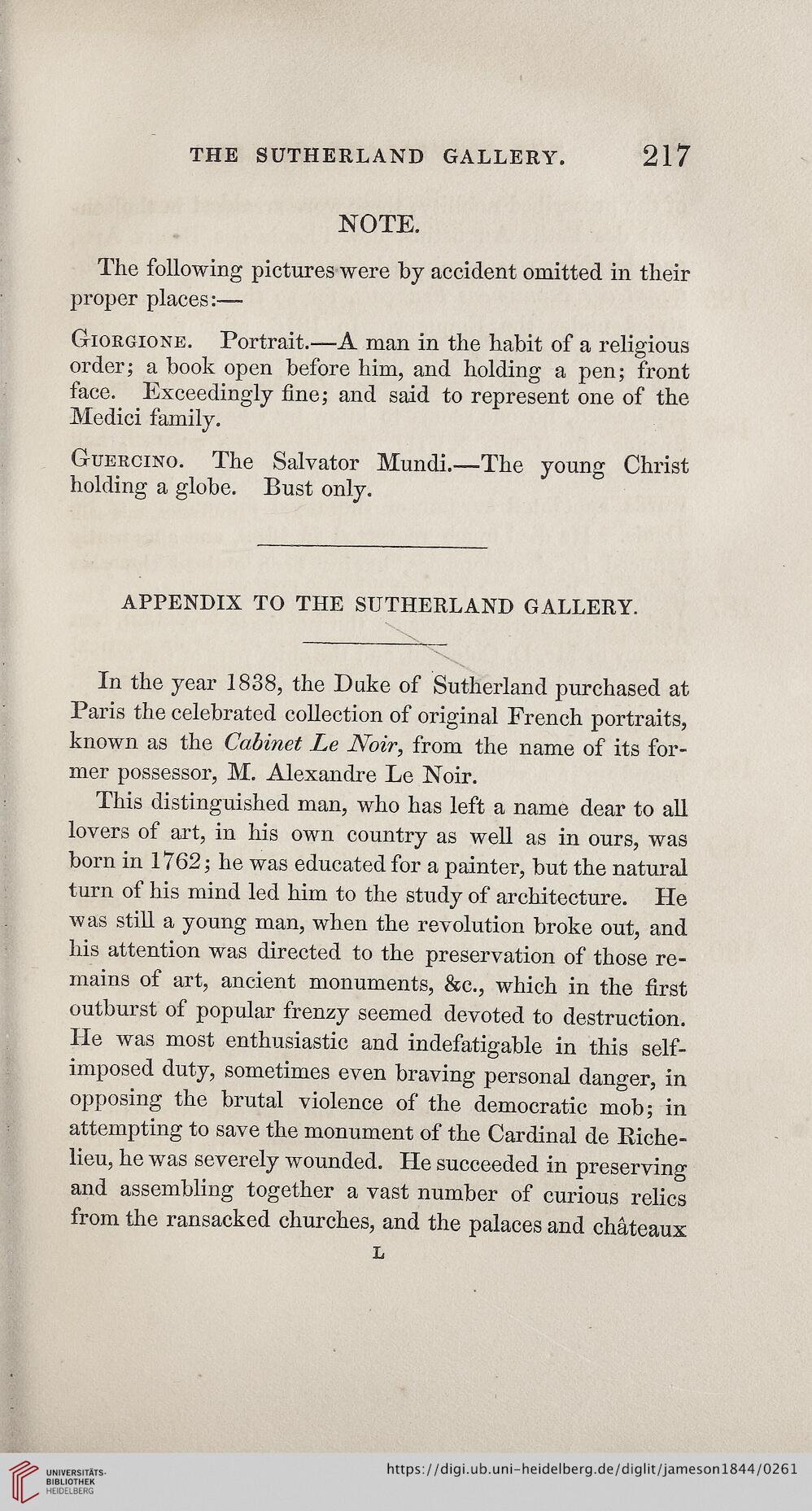THE SUTHERLAND GALLERY.
217
NOTE.
The following pictures were by accident omitted in their
proper places:—
Giorgione. Portrait.—A man in the habit of a religious
order; a book open before him, and holding a pen; front
face. Exceedingly fine; and said to represent one of the
Medici family.
Guercino. The Salvator Mundi.—The young Christ
holding a globe. Bust only.
APPENDIX TO THE SUTHERLAND GALLERY.
In the year 1838, the Duke of Sutherland purchased at
Paris the celebrated collection of original French portraits,
known as the Cabinet Le Noir, from the name of its for-
mer possessor, M. Alexandre Le Noir.
This distinguished man, who has left a name dear to all
lovers of art, in his own country as well as in ours, was
born in 1762; he was educated for a painter, but the natural
turn of his mind led him to the study of architecture. He
was still a young man, when the revolution broke out, and
his attention was directed to the preservation of those re-
mains of art, ancient monuments, &c., which in the first
outburst of popular frenzy seemed devoted to destruction.
He was most enthusiastic and indefatigable in this self-
imposed duty, sometimes even braving personal danger, in
opposing the brutal violence of the democratic mob; in
attempting to save the monument of the Cardinal de Riche-
lieu, he was severely wounded. He succeeded in preserving
and assembling together a vast number of curious relics
from the ransacked churches, and the palaces and chateaux
L
217
NOTE.
The following pictures were by accident omitted in their
proper places:—
Giorgione. Portrait.—A man in the habit of a religious
order; a book open before him, and holding a pen; front
face. Exceedingly fine; and said to represent one of the
Medici family.
Guercino. The Salvator Mundi.—The young Christ
holding a globe. Bust only.
APPENDIX TO THE SUTHERLAND GALLERY.
In the year 1838, the Duke of Sutherland purchased at
Paris the celebrated collection of original French portraits,
known as the Cabinet Le Noir, from the name of its for-
mer possessor, M. Alexandre Le Noir.
This distinguished man, who has left a name dear to all
lovers of art, in his own country as well as in ours, was
born in 1762; he was educated for a painter, but the natural
turn of his mind led him to the study of architecture. He
was still a young man, when the revolution broke out, and
his attention was directed to the preservation of those re-
mains of art, ancient monuments, &c., which in the first
outburst of popular frenzy seemed devoted to destruction.
He was most enthusiastic and indefatigable in this self-
imposed duty, sometimes even braving personal danger, in
opposing the brutal violence of the democratic mob; in
attempting to save the monument of the Cardinal de Riche-
lieu, he was severely wounded. He succeeded in preserving
and assembling together a vast number of curious relics
from the ransacked churches, and the palaces and chateaux
L




